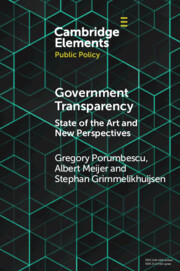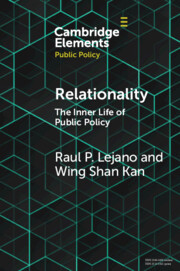Government Transparency
This Element argues that to understand why transparency “works” in one context, but fails in another, we have to take into account how institutional (macro), organizational (meso) contexts interact with individual behavior (micro). A review of research from each of these perspectives shows that the big promises thought to accompany greater transparency during the first two decades of the 20th century have not been delivered. For example, transparency does not necessarily lead to better government performance and more trust in government. At the same time, transparency is still a hallmark of democratic governance and as this book highlights, for instance, transparency has been relatively successful in combating government corruption. Finally, by explicitly taking a multilayered perspective into account, this Element develops new paths for future research.
Reviews & endorsements
'The book will help transparency researchers by providing a review of the most relevant literature in a very small space; it can also serve as a basis for operationalizing dependent and independent variables for transparency-related research. The book can be used for teaching courses in public policy and public administration, as it describes the issue of transparency in a very clear and accessible way, even for readers who are not senior academics. In this respect, it is a very effective teaching tool.' Michal Plaček, Public Administration
Product details
June 2022Adobe eBook Reader
9781108676793
0 pages
This ISBN is for an eBook version which is distributed on our behalf by a third party.
Table of Contents
- 1. The need for a layered understanding of government transparency
- 2. From idea to legislation and organizational practices
- 3. What is transparency?
- 4. The macro-level perspective on transparency
- 5. The meso-level perspective on transparency
- 6. The micro-level perspective on transparency
- 7. Linking and integrating research on government transparency
- References.






